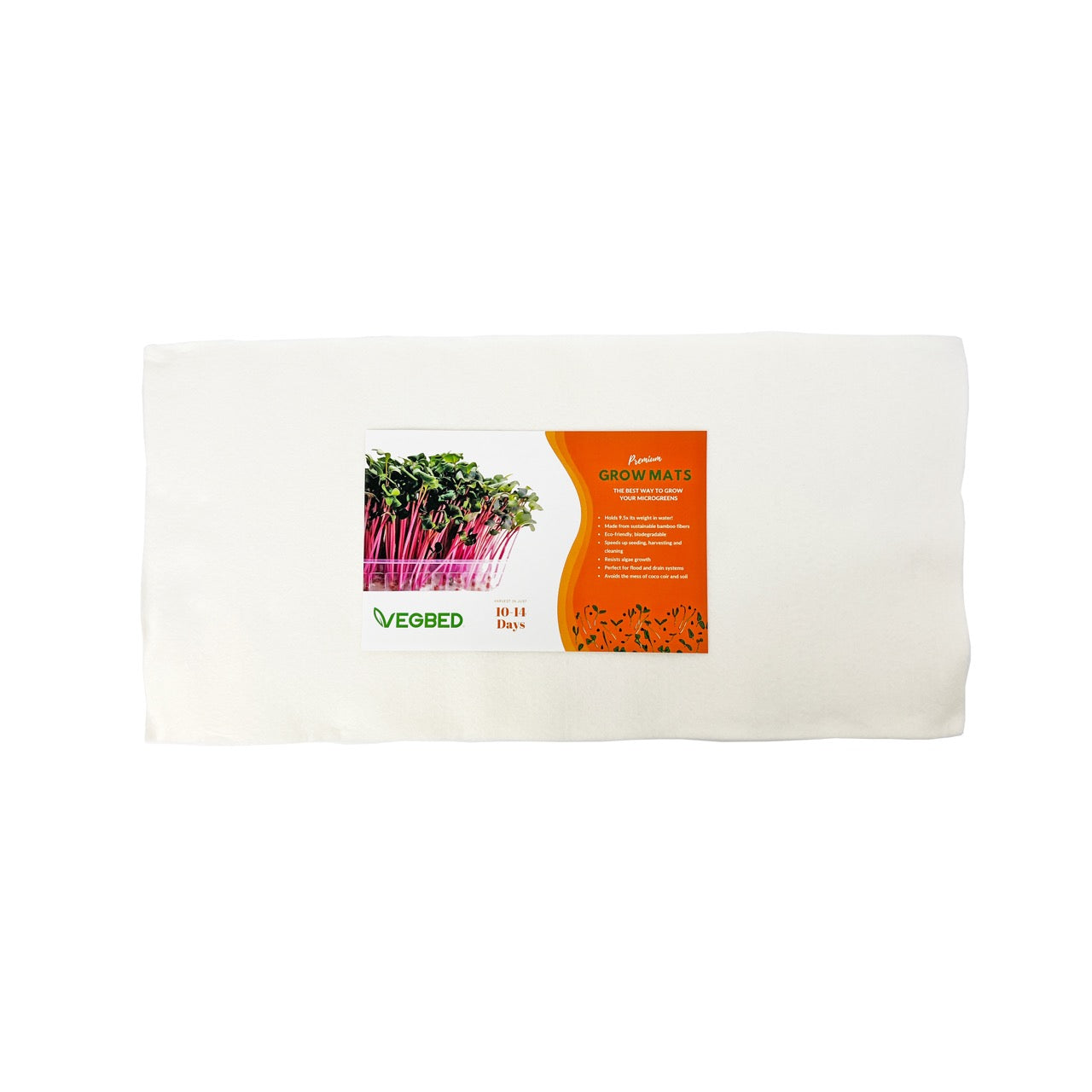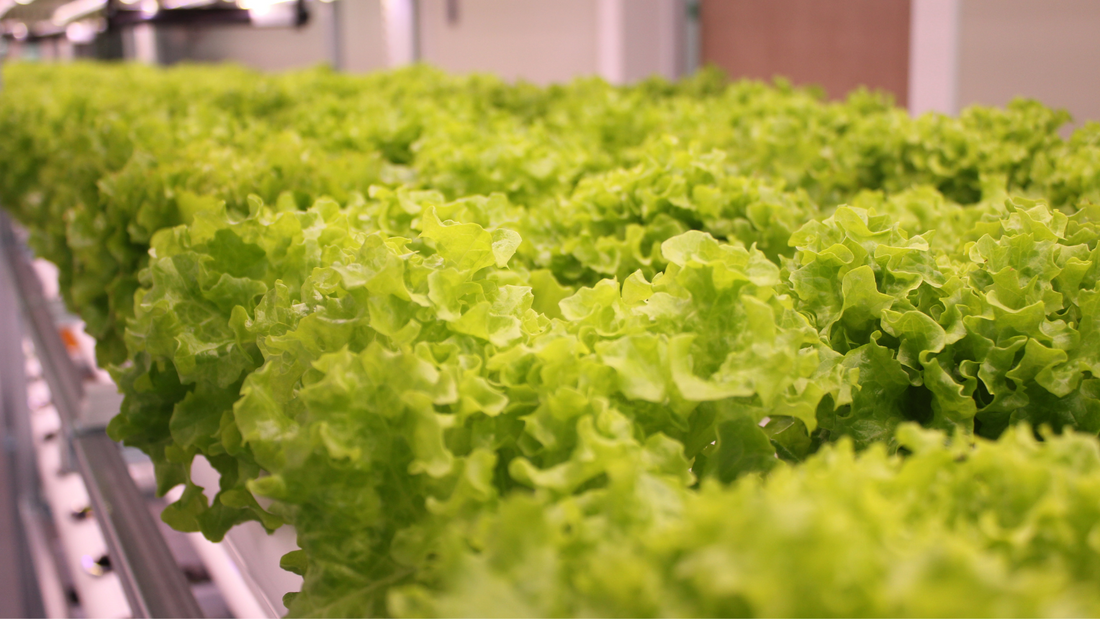In the world of hydroponics, numerous systems offer unique benefits for plant growth, water efficiency, and sustainability. Recently, we've published in-depth blogs on two other popular hydroponic systems: Deep Water Culture (DWC) and Ebb & Flow. In case you missed them, you can read more about each system in our dedicated blog posts here:
While DWC relies on the constant submersion of plant roots in a nutrient-rich solution, and the Ebb & Flow system provides periodic flooding and draining of the roots, the Nutrient Film Technique (NFT) takes a slightly different approach by using a thin, continuous flow of nutrient solution over the plant roots.
In this blog, we’ll dive into the mechanics of NFT and how it compares to both DWC and Ebb & Flow. Each system has its pros and cons, and choosing the right one depends on the grower's goals, space, and resources. Let's explore why NFT is becoming a go-to solution for growers worldwide.
What is Nutrient Film Technique (NFT)?
The Nutrient Film Technique (NFT) is a hydroponic system where a thin, continuous film of nutrient solution flows over the roots of plants housed in shallow, sloped channels. This constant flow ensures that the plants receive a steady supply of nutrients and water, helping them grow efficiently.
Here’s a breakdown of the basic components of an NFT system:
-
Channels: These are shallow, slanted trays or tubes where the plant roots grow. The slant ensures that the nutrient solution flows smoothly over the roots.
-
Nutrient Solution: A water and nutrient mixture that plants absorb as the solution flows through the system.
-
Pump: A pump circulates the solution through the system, ensuring consistent delivery to the plants.
NFT is a closed-loop system, meaning the nutrient solution is recirculated, reducing water waste—a key advantage over traditional farming methods.
How NFT Works in Hydroponics
At its core, NFT relies on the flow of nutrient solution across the roots of plants. The nutrient solution is pumped into the channels, flows over the roots, and drains back into a reservoir to be recirculated. This creates a highly efficient growing environment with minimal water waste.
The Process:
-
Set-Up: The NFT system begins with sloped channels where the nutrient solution flows. The channel angle ensures that the solution continuously flows over the roots.
-
Nutrient Delivery: The nutrient solution is pumped into the highest point of the channel, where it flows over the roots. Plants absorb nutrients through their roots, promoting healthy growth. The solution is carefully balanced to provide the plants with everything they need.
-
Recirculation: After the nutrient solution has passed over the roots, it drains back into a reservoir. This closed-loop system reduces water and nutrient waste, making NFT one of the most eco-friendly hydroponic methods.
Benefits of NFT for Hydroponics
1. Space Efficiency
Like Ebb & Flow systems, NFT maximizes space utilization. Plants grow in shallow channels, allowing multiple levels of growth to be stacked in tight spaces. This makes it ideal for urban farming or commercial growers with limited room.
2. Faster Growth
The constant flow of nutrient solution ensures plants receive the right amount of water and nutrients, leading to faster growth cycles. This is similar to DWC, where the plants' roots are submerged in nutrient solution, though NFT offers more flexibility in terms of plant root exposure to air.
3. Water Efficiency
NFT systems recirculate the nutrient solution, reducing water waste significantly. This is in stark contrast to traditional farming and even other hydroponic systems like DWC, where water can sometimes be wasted due to evaporation and runoff.
4. Reduced Risk of Disease
NFT’s continuous nutrient flow keeps the system well-oxygenated, which helps prevent root rot—a common issue in both soil and hydroponic growing. It’s more efficient in avoiding stagnation compared to Ebb & Flow, which has periods of flooding that could lead to disease if not managed well.
5. Ideal for Smaller Plants
NFT is particularly well-suited for small, shallow-rooted plants like lettuce, herbs, and microgreens. While DWC may be more appropriate for larger plants like tomatoes, NFT’s setup and smaller root space make it ideal for high-density, high-turnover crops.
Challenges of NFT Systems
Like Ebb & Flow and DWC, NFT systems come with their challenges:
1. Initial Setup Costs
While NFT systems tend to have lower operational costs due to water and nutrient recirculation, the initial setup can be more expensive than simpler systems like Ebb & Flow.
2. Maintenance Requirements
NFT systems require regular checks to ensure that the channels aren’t clogged and that the nutrient solution is balanced. This can be more intensive compared to DWC, where the water is replenished in large amounts.
3. Risk of Clogging
NFT channels are more susceptible to clogs, especially in commercial setups. The thin film of nutrient solution requires consistent flow, and any blockage can disrupt the entire system, leading to nutrient deficiency or even plant death.
4. Limited Plant Variety
NFT is typically better for shallow-rooted crops, making it less suitable for large, deep-rooted plants like tomatoes or cucumbers. For larger crops, DWC might be a better fit, as it allows for larger root systems.
NFT vs. DWC vs. Ebb & Flow
Now that we’ve covered the basics of NFT, let’s compare it to Deep Water Culture (DWC) and Ebb & Flow, both of which we’ve also covered in our previous blogs.
-
DWC offers plants constant submersion in nutrient solution, promoting rapid growth due to higher nutrient uptake. However, it requires larger space and can be prone to oxygen depletion at the roots if the system isn't properly aerated. You can read more in our blog: DWC: Simple Yet Higher Yield Growth.
-
Ebb & Flow is a flexible system where plants’ roots are periodically flooded with nutrient solution and then drained. This allows for efficient nutrient uptake, but the flooding and draining process can lead to root rot or fungal diseases if not managed correctly. Learn more in our blog: Ebb and Flow System: The Flexible Hydroponic Choice for Growers.
In comparison, NFT is a great middle ground—it uses less water, provides better air exposure to roots, and is ideal for shallow-root crops. The recirculating nature of NFT makes it one of the most water-efficient systems, which could be a major benefit for sustainable farming practices.
Conclusion
Whether you're looking to optimize your hydroponic setup or get started with a more efficient system, Nutrient Film Technique (NFT) offers numerous benefits, including water efficiency, faster plant growth, and reduced disease risk. Though it comes with some challenges, such as clogging and limited plant variety, NFT’s efficiency makes it a strong contender in the world of hydroponics.
If you’re curious about how it compares to other systems like DWC and Ebb & Flow, be sure to check out our previous blogs for a more detailed breakdown.
As always, selecting the right hydroponic system depends on your specific needs and resources. With the right setup, NFT can lead to faster-growing, higher-yielding crops while conserving water and space—making it a sustainable choice for the future of farming.



